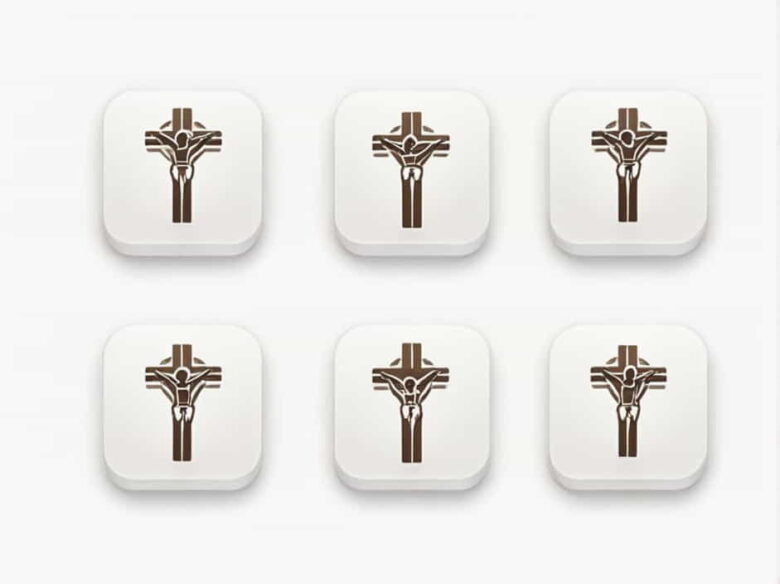Teaching the crucifixion of Jesus Christ is an essential part of Christian education. It represents the core of the Gospel message, demonstrating Gods love, sacrifice, and redemption. However, explaining the crucifixion in a way that is engaging, meaningful, and age-appropriate can be challenging.
Using creative teaching methods can help students of all ages grasp the significance of Jesus sacrifice. This content explores interactive, visual, and experiential ways to teach the crucifixion effectively.
1. Storytelling with Emotion and Reflection
One of the most powerful ways to teach the crucifixion is through storytelling. Instead of simply reading from the Bible, teachers can bring the story to life using:
- Dramatic voice modulation to emphasize emotions.
- Pauses for reflection, allowing students to feel the weight of Jesus’ suffering.
- Personal connections, encouraging students to relate the story to their own lives.
To make it more engaging, use character perspectives:
- Tell the story from the viewpoint of Mary, Peter, or a Roman soldier.
- Encourage students to imagine how they would feel if they were present at the crucifixion.
2. Role-Playing and Drama
Dramatization helps students visualize and emotionally connect with the crucifixion. Divide students into groups and assign roles such as:
- Jesus
- Roman soldiers
- Mary and the disciples
- Pilate and the crowd
After performing the scene, discuss:
- How did it feel to take on these roles?
- What did you learn about Jesus sacrifice?
- How does this story impact your faith today?
For younger children, a puppet show or skit can be an effective and less intense way to present the story.
3. Visual Art and Drawing Activities
Encouraging students to express their understanding of the crucifixion through art can be deeply meaningful. Some ideas include:
- Painting or drawing scenes from the crucifixion story.
- Creating a collage with images and words representing Jesus sacrifice.
- Illustrating a timeline of events from the Last Supper to the resurrection.
After the activity, ask students to explain their artwork and discuss what the crucifixion means to them.
4. Hands-On Object Lessons
Using physical objects helps make abstract concepts tangible. Here are a few object lessons:
The Nail and the Cross
- Pass around a large nail and ask students how it would feel to have it driven into their hands or feet.
- Show a small wooden cross and explain that Jesus chose to endure the pain for humanitys salvation.
The Broken Rope (Sin and Redemption)
- Use a rope to represent our connection to God.
- Cut the rope to symbolize how sin separates us from God.
- Tie the rope back together using a red ribbon to show how Jesus’ blood restores our relationship with God.
5. Music and Worship Songs
Music is a powerful way to internalize the message of the crucifixion. Choose worship songs that reflect on Jesus sacrifice, such as:
- The Old Rugged Cross
- When I Survey the Wondrous Cross
- How Deep the Fathers Love for Us
Encourage students to listen to the lyrics carefully and discuss:
- What do these songs teach us about Jesus’ love?
- How do they make you feel about His sacrifice?
You can also invite students to write their own songs or poems about the crucifixion.
6. Interactive Bible Study with Reflection Questions
Instead of a traditional lecture, turn Bible study into an interactive discussion. Read passages about the crucifixion, such as Matthew 27, Mark 15, Luke 23, or John 19, and ask reflection questions:
- What emotions do you feel when you read about Jesus suffering?
- Why do you think Jesus endured the cross?
- How does this event change how you live your life?
Encourage students to write their responses in a journal and share if they feel comfortable.
7. Science and Symbolism Experiment
A science experiment can help illustrate Jesus’ sacrifice and forgiveness.
The ‘Sin and Cleansing’ Experiment
- Fill a clear glass with water (representing a pure heart).
- Add a few drops of dark-colored liquid (symbolizing sin).
- Pour bleach into the water (representing Jesus sacrifice), which clears the liquid.
Discuss how Jesus death on the cross cleanses our sins and restores our relationship with God.
8. Stations of the Cross Walk-Through
Create a Stations of the Cross experience, where students walk through different locations representing key moments of the crucifixion.
Each station can include:
- A short Bible passage about the event.
- A symbol (e.g., a crown of thorns, a piece of wood, a torn cloth).
- A reflection prompt, encouraging students to think about what Jesus endured.
This activity is especially powerful during Holy Week and can be done indoors or outdoors.
9. Writing Letters to Jesus
Encourage students to write a personal letter to Jesus expressing gratitude for His sacrifice.
They can write about:
- How the crucifixion story affects their faith.
- What they want to say to Jesus in response to His love.
- Any struggles they want to surrender at the cross.
Afterward, students can keep their letters as a private reflection or place them at the foot of a wooden cross as an act of worship.
10. The Redemption Bracelet Activity
A bracelet-making activity using colored beads can symbolize different aspects of Jesus’ sacrifice:
- Black Sin
- Red Jesus’ blood
- White Forgiveness
- Blue Baptism and new life
- Green Growth in faith
- Gold Eternal life
As students assemble their bracelets, discuss the meaning behind each color. This creates a lasting reminder of the crucifixions significance.
11. Modern-Day Parables and Stories
Sometimes, telling a modern-day story can help students understand the weight of Jesus’ sacrifice.
For example, share a story about:
- A firefighter who rescues people but loses his own life.
- A parent who gives up something precious for their childs safety.
- A soldier who sacrifices their life for their country.
After the story, discuss how it relates to Jesus giving His life for humanity.
12. Communion as a Teaching Moment
If appropriate, use Communion to help students reflect on the crucifixion.
- Explain the bread as Jesus’ body, broken for us.
- Explain the juice/wine as His blood, shed for our forgiveness.
- Encourage a moment of silent prayer and gratitude.
This hands-on experience deepens the understanding of Jesus’ sacrifice.
Teaching the crucifixion doesnt have to be a passive experience. By using creative methods like storytelling, drama, art, music, object lessons, and interactive Bible study, students can develop a deeper, personal connection to the message of Jesus’ sacrifice.
The goal is to help students not just learn about the crucifixion but truly understand and experience its significance in their hearts. With these creative approaches, the message of the cross becomes real, powerful, and transformative.



